The United Kingdom
From the beginning of the reign of Queen Victoria many
Jews began to migrate to the West End district, Westminster and Hyde
Park. In 1848 the authorities of the Great Synagogue, the long-standing
centre of Synagogue life in London, felt that with the establishment
of the Reform Synagogue a few years earlier some of their members would
become attached, notwithstanding their own inclination, to the solitary
place of worship within easy reach of their own homes. Alternatively,
they might break away from their present allegiance to the Great Synagogue
and establish their own congregation, with results that might prove
fatal to the economy of the parent body. It was therefore decided to
establish, under the auspices of the Great Synagogue itself, a branch
Synagogue more conveniently situated which would satisfy the religious
requirements of those who lived in the vicinity without modifying their
relationship to the original Community....it was not until 29th March
1855 that the building was consecrated. It is from that day that the
congregation really dates and services commenced.
In 1862 there arose the question of the renewal of
the lease, and in view of the increasing Jewish population it was decided
to consider the desirability of erecting a new building....On the 7th
April 1870, corresponding to the 6th Nisan 5630, the new building was
consecrated.
On May 10, 1941 the synagogue was destroyed by enemy
action.
Due to the difficulty in obtaining a Building Licence
for a permanent Synagogue of suitable character to replace the former
building, it was decided to build a temporary Synagogue....The new building
was consecrated on September 30, 1948.
In May 1955, with the abolition of licensing restrictions,
it was decided to rebuild the Synagogue on its present site in a manner
commensurate with its earlier history and dignity....On February 4,
1956, the final service was held in the existing, Synagogue, and rebuilding
of the new Synagogue commenced the following day.
The consecration of the rebuilt Synagogue took place
on the March 23, 1958.
The New West End Synagogue
The Foundation Stone of the New West End Synagogue
was laid on June 7, 1877, by Mr. Leopold de Rothschild in the presence
of the Chief Rabbi, Dr. Nathan Marcus Adler, and the building was formally
opened on March 30, 1879....The building bears many similarities to
the Princes Road Synagogue in Liverpool, which had been designed by
the same architect, George Audsley, shortly before the New West End
was planned. At the time of its opening, the Jewish Chronicle described
the architecture of the building as “...eclectic, although based
chiefly on the Saracenic. The sharply cut and channelled foliage ornaments,
and both the round and pointed horseshoe arches point to this origin;
while the fusion of the Gothic element is mainly apparent in the proportions
and disposition of the main portions of the buildings, and in...the
rose windows and circular, foiled, clerestory lights. The entire treatment...avoids
symbolism of every description, and the severe conventionalism...prevents
any infringement of the rules of the Hebrew faith. Externally, the building
is constructed of red brick, with the leading ornamental portions in
red stone...the central gable rising to the height of about 77 feet
is flanked by two square turrets 94 feet in height finished with open
tabernacles and domes...In the central gable is placed a magnificent
doorway deeply recessed and elaborately ornamented. The doors are of
teak hung with bold wrought iron hinges...The seating, which affords
accommodation for about 800 persons throughout, and the doors and gallery
fronts are of polished pitch pine; the doors and panels of the gallery
fronts display wood of remarkable richness and rarity. Probably no such
wood is to be seen in any public building in London...”
As time went on, various alterations and improvements
were introduced. During the 1890s the walls were faced with alabaster
slabs relieved by the finest Cipallino marble from Saillin in the Rhone
Valley. The marble and alabaster pulpit and the marble railing in front
of the Ark were also installed, while the octagonal iron columns were
covered in marble so skilfully that it is virtually impossible to distinguish
them from solid marble. About the same time electric lighting was installed,
replacing the original gas lamps, examples of which can still be seen
inside the Synagogue above each of the doors.
A notable feature of the internal decoration is to
be found in the texts that adorn the walls. This idea was not new, being
found in mediaeval Synagogues. There were originally nineteen texts;
at a later date those on the side walls of the Gallery were added. The
texts concentrate on the ideas of Divine knowledge and worship, as well
as practice, duty and love. Most of the quotations are from the Psalms,
and were selected by the late Rev. Simeon Singer, Minister of the Synagogue
from its consecration until his death in 1906.
The beauty of the Synagogue is enhanced by the magnificent
stained glass windows, which were designed and made by a Mr. Westlake,
reputedly one of the foremost authorities in England on stained glass
windows and mosaics. The rose window above the Ark, executed by Erwin
Bossanyi in 1937 in memory of Emma, Lady Rothschild, illustrates numerous
aspects of Jewish ritual and tradition, while the centres of the side
windows are all different, the framework remaining constant.
The Synagogue’s treasures include some twenty Sifrei
Torah, as well as superb examples of embroidery and silver, some dating
back to the early eighteenth century; some of the Torah bells and breastplates
which are not in regular use are on loan for display at the Jewish Museum.
The New West End Synagogue was designated a “Grade I” National Landmark on August 7, 2007, becoming the second Jewish house of worship in the UK to be designated as such, after the Bevis Marks Synagogue in London's East End. This ranking of “Grade I” is reserved for structures determined to be of the greatest historic and cultural significance.
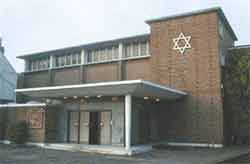
|
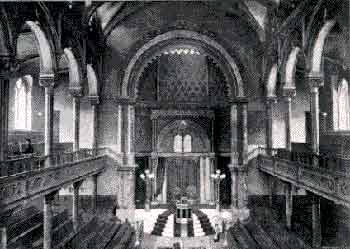
Central Synagogue
London (c. 1870)
|
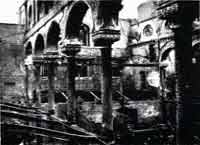
Central Synagogue destroyed by enemy action
London, May 1941
|
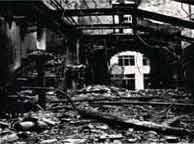
Central Synagogue destroyed by enemy action
London, May 1941
|
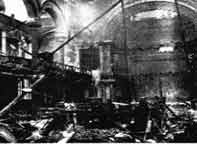
Central Synagogue destroyed by enemy action
London, May 1941
|
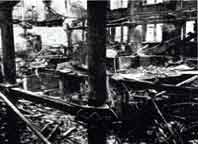
Central Synagogue destroyed by enemy action
London, May 1941
|
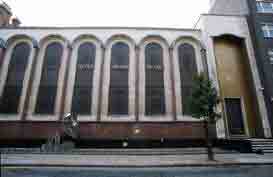
Central Synagogue
London, 2006
|
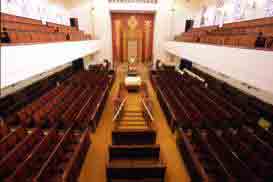
Interior of Central Synagogue
London, 2006
|
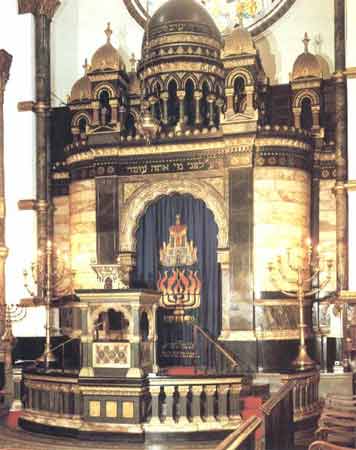
New West End Synagogue
London |
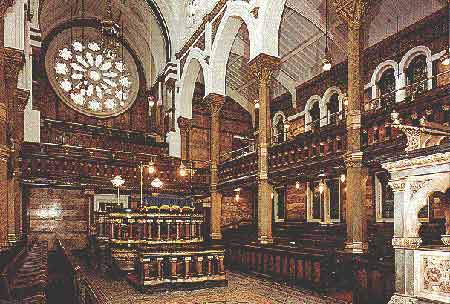
New West End Synagogue
London
|
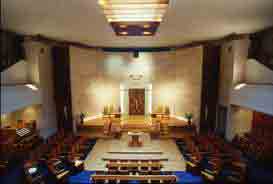
Liberal Jewish Synagogue
London
|
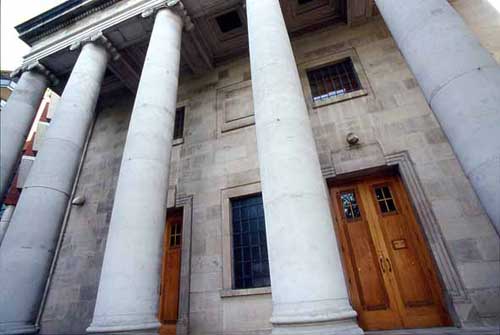
Liberal Jewish Synagogue
London
|
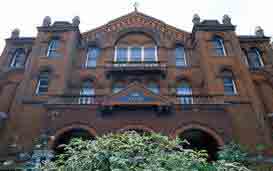
New London Synagogue
London
|
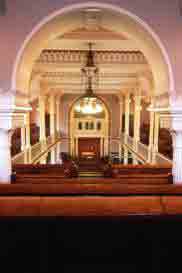
New London Synagogue Interior
London
|
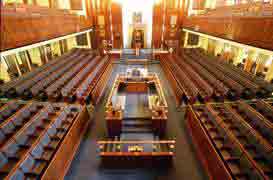
Western Marble Arch Synagogue
London
|
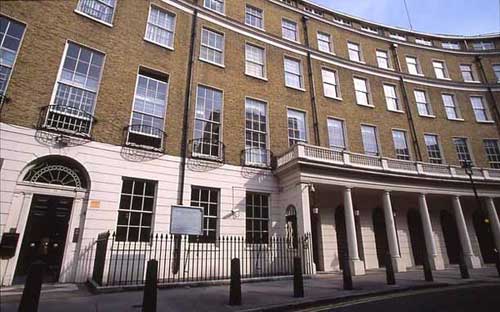
Western Marble Arch Synagogue
London
|
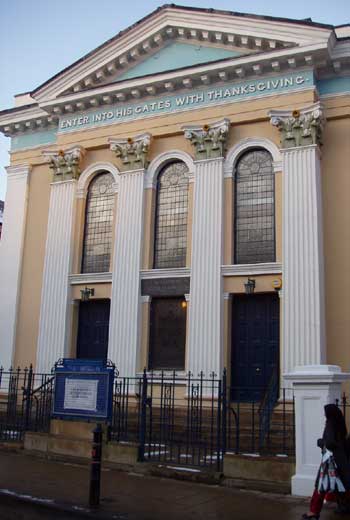
Nottingham Hebrew Congregation
Nottingham
|
|
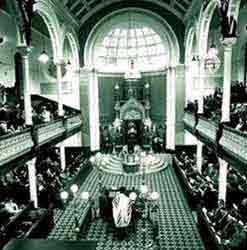
Garnet Hill Synagogue
Glasgow, Scotland
|
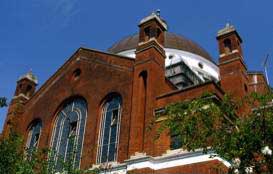
Spanish & Portuguese Synagogue
London
|
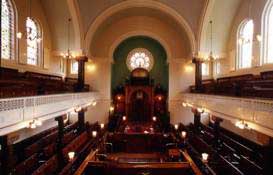
Spanish & Portuguese Synagogue
London
|
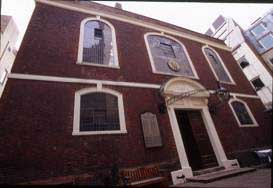
Bevis Marks Synagogue
London
|
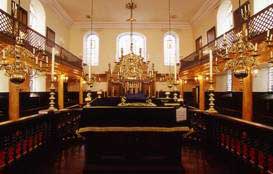
Bevis Marks Synagogue
London
|
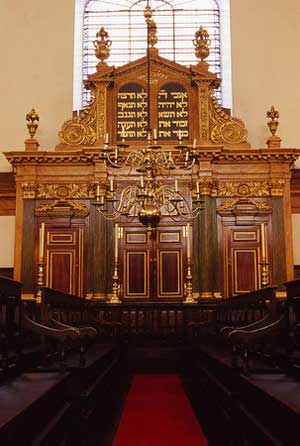
Bevis Marks Synagogue
London
|
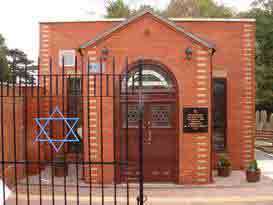
Stoke-on-Trent & North Staffordshire Hebrew Congregation Synagogue
London
|
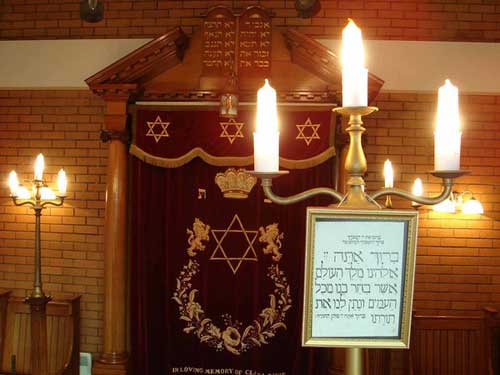
Stoke-on-Trent & North Staffordshire Hebrew Congregation Synagogue
London |
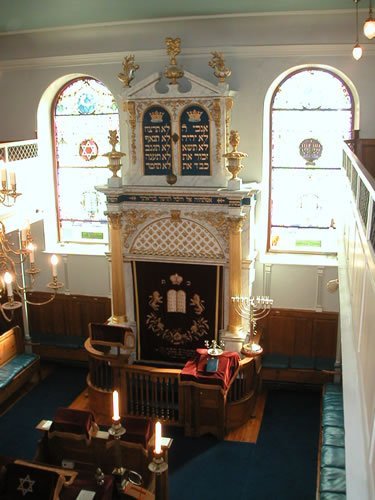
Plymouth Hebrew Congregation
London
|
To learn about the history of
the Jewish community in the United Kingdom, click here.
Source: Spanish & Portuguese
Jews Congregation, Bevis
Marks Synagogue, Central Synagogue (2006), New London synagogue, Liberal Jewish synagogue, Western Marble Arch Synagogue, Stoke-on-Trent & North Staffordshire Hebrew Congregation Synagogue, photos courtesy of HaChayim
HaYehudim Jewish Photo Library (© Jono David
Media)
Ilford synagogue photo courtesy of Ilford
Synagogue
Central Synagogue photos courtesy of the Central
Synagogue
New West End Synagogue photos and history
courtesy of the New
West End Synagogue
Nottingham Synagogue copyright Mitchell Bard
Plymouth Hebrew Congregation photo with permission from the synagogue.
|